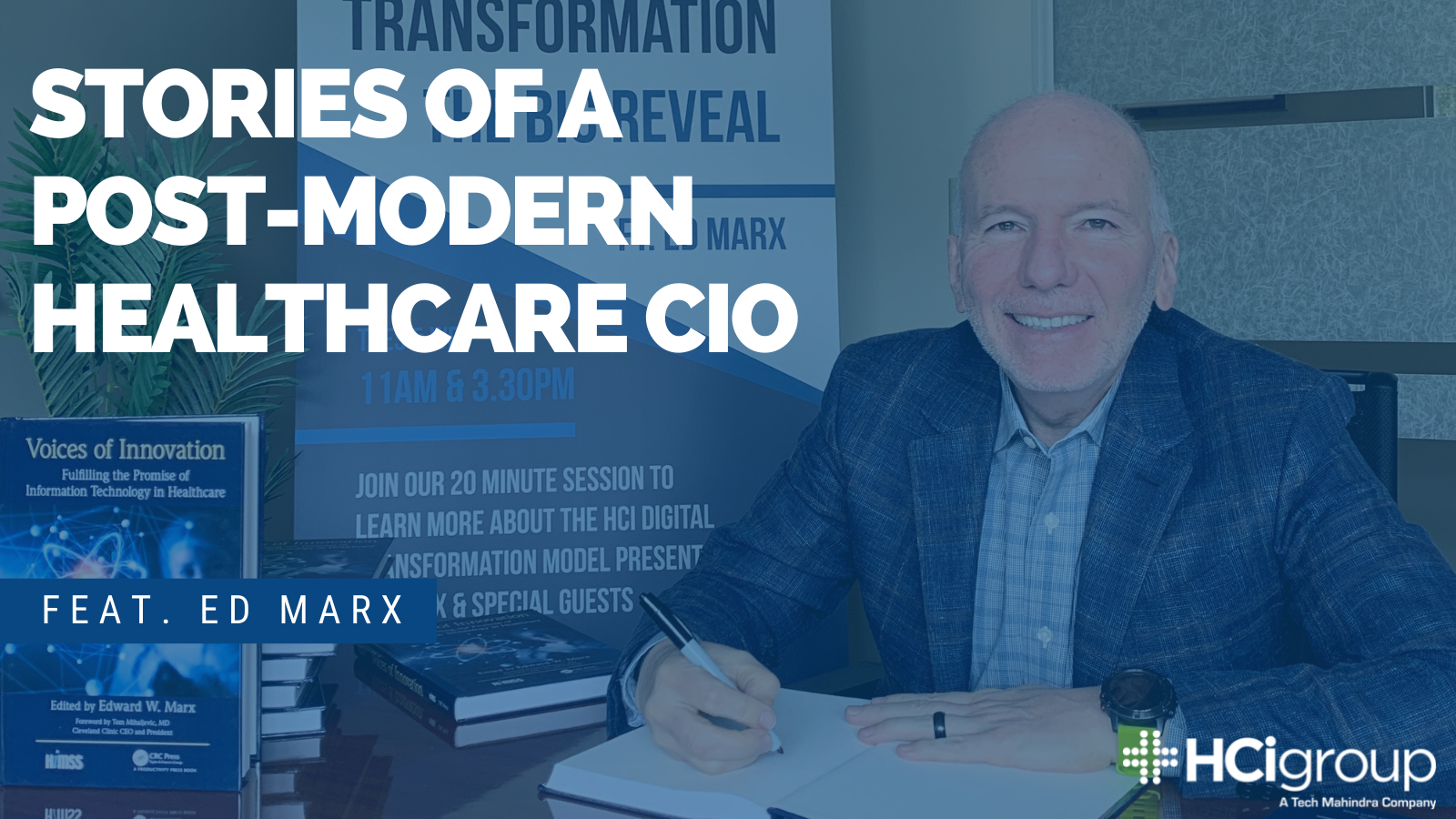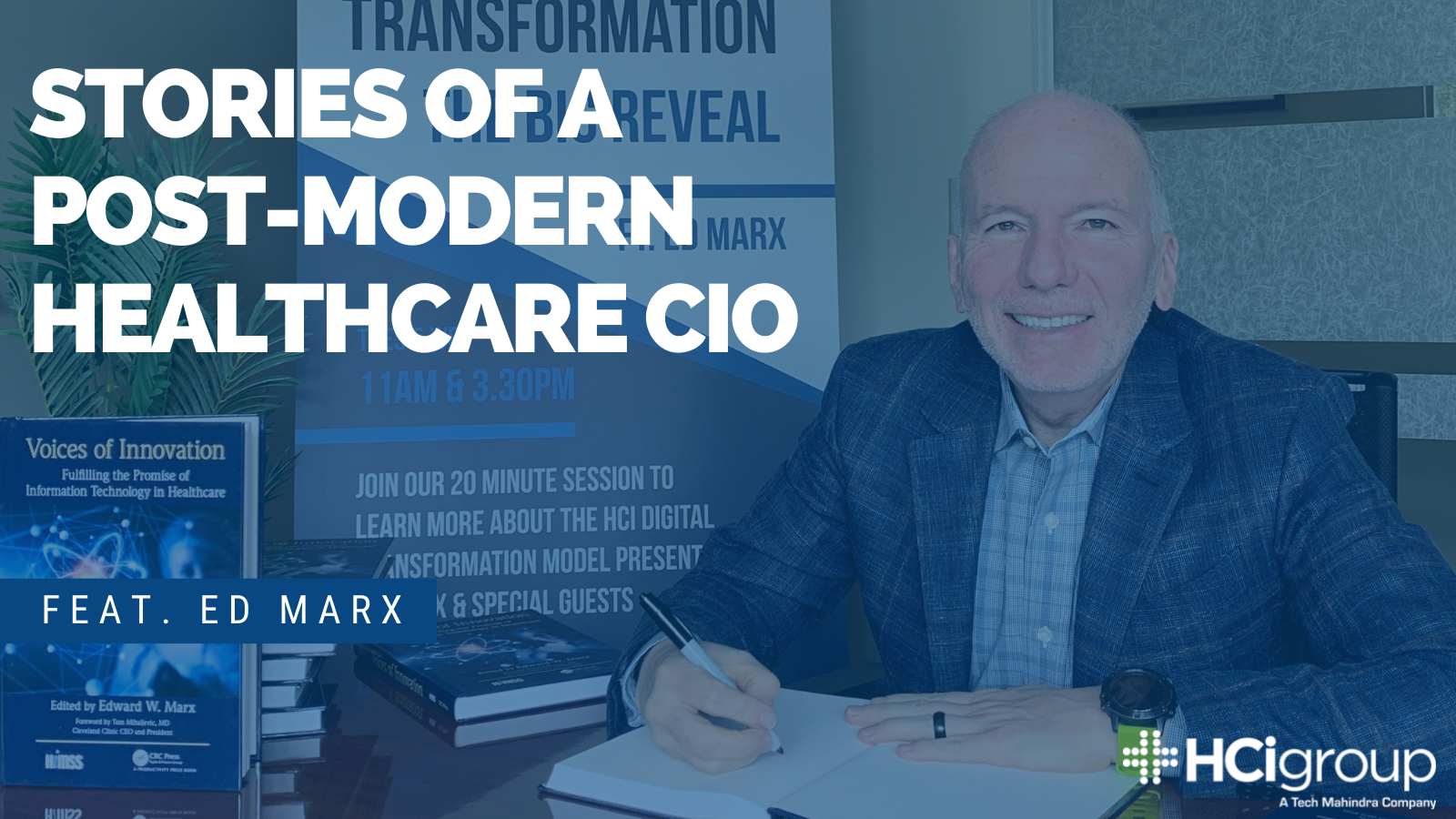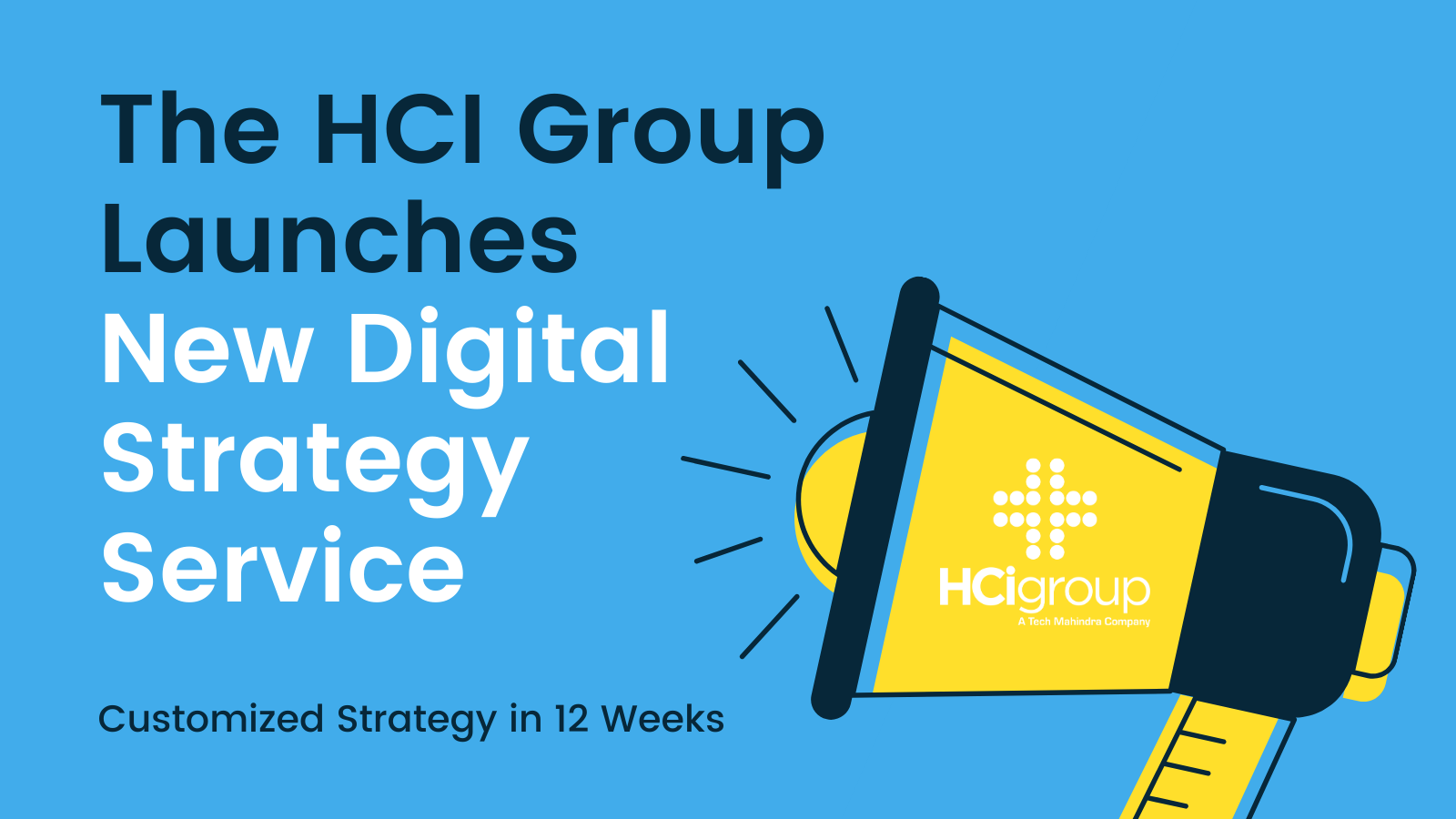Stories of a Post-Modern Healthcare CIO (feat. Ed Marx)


The post-modern healthcare CIO is all about doing what hasn’t been done before — and moving into the future.
“They don’t sit around waiting. They’re pushing and experimenting,” says Ed Marx, Chief Digital Officer for The HCI Group.
Marx shares a heart replacement surgery project that he worked on when he was CIO at the Cleveland Clinic as an example. Though he didn’t finish it before leaving the organization, he had launched an effort in which a surgeon in the United States would have been able to remotely perform mitral valve surgeries on patients at a new hospital in London.
“The best person in the world to do that surgery is in Cleveland but he’s not going to travel to London to be doing surgeries. It just doesn’t make sense.
“But we had it set up to where he was going to be doing the surgeries out of Cleveland in a specialized environment and the patient would be in London. That’s the future. That’s what a post-modern CIO does,” says Marx, who has been a CIO at some of the nation's largest health systems and was most recently CIO and digital leader for Cleveland Clinic before joining The HCI Group.
Though the COVID-19 pandemic has accelerated digital transformation at many health-care organizations, those led by post-modern, transformational CIOs already had tech initiatives in place. Marx offers some projects from his experience as examples of where post-modern CIOs have taken organizations — as well as perhaps inspirations for where they could go.
Advocating for virtual care
“You don’t want to keep building brick-and-mortar locations when the future of healthcare is not brick-and-mortar,” Marx says. “You need to think about doing something differently.”
At one healthcare organization, Marx got the C-suite executives to provide his department with 50 cents for virtual care projects for every $1 spent on brick-and-mortar facilities. “If they came in and talked about building another hospital for $100 million, I would say, ‘Ok. I want $50 million so that we could build out some of our digital programs. That’s thinking about the future,” Marx says.
As a result, the organization was ahead of the shift to virtual care that the pandemic would eventually hasten due the significant investments that the healthcare system had made in digital programs under the agreement between executives.
“Vision is really important,” Marx says, noting that you can develop it by reading, talking and thinking about the future. “You evolve what’s next and what’s likely to happen.”
Achieving clinical priorities
Marx always ties a CIO’s work back to an organization’s pillars. For example, he helped one organization reduce the incidents of venous thromboembolism (VTE), which is often associated with infections and occurs when a blood clot forms in a deep vein.
After a patient died from VTE, the organization determined that there had been a slow degradation in their condition that was not detected. So, the organization created an early warning system that could detect micro-degradations like that which had contributed to the patient’s death. The new technology warned clinicians that a micro-degradation was present, like with flashing lights.
“We developed this early warning system that has saved dozens of lives at the organization since,” Marx says. “And the cool thing is, we shared it with the rest of the world. So, it’s probably thousands of people whose lives have been saved, especially with the VTE where it used to be left up to a clinician’s judgment.
“We automated it so they never had to think about it. They just received an automatic alert.”
Adopting agile practices
Agile project management will continue to gain ground in healthcare, according to Marx. “It’s not a tidal wave of reform that's coming but it's definitely a slow increase where more and more organizations are thinking about agile and I'm not talking about software development.”
Marx’s first experience with agile workflows came when he was CIO at New York City Health & Hospitals. The organization’s project management office used the approach.
“I started hanging out with them and was really impressed. So, we started laying that out elsewhere,” Marx says.
“And when I came to the Cleveland Clinic, I made the entire IT organization agile. Our customer satisfaction improved, our efficiencies improved and we started becoming known more as a strategic asset.”
Downtime also decreased and a dashboard displayed the department’s work in real-time. “It was so successful that HR and Finance started adopting the same processes,” Marx says. “It’s really the future. So, you'll see a lot of post-modern CIOs grabbing on to agile and reorganizing the way they operate.”
Fostering innovation
A post-modern CIO innovates constantly. “You talk to people, you read, and you start putting things together and they don’t always have to be right because innovation isn’t always right,” Marx says. “We’ve made some really good mistakes.”
Marx’s favorite story of a failure-turned-innovation goes back about a dozen years when Microsoft introduced its Surface. “It wasn’t the Surface like they have today though, it was like a coffee table,” he says. “It had a huge screen and was interactive. It was cool.”
So, Texas Health Resources, where he was CIO at the time, obtained some grants and bought some Surfaces — only to have Apple’s iPad come out about six months later. “‘Oh wow,’” he recalls thinking, “it was a completely different form factor.”
Looking back now, it is clear that the iPad has transformed care in ways that the coffee-table-sized Surface never did. But that’s not to say that the healthcare organization squandered its investment in the once-cool Surface.
Rather, Texas Health Resources used the original Surface to digitize Alzheimer’s testing, which until then had been done manually. “We were then able to take that same design thinking and apply it to the iPad,” Marx says.
Eventually, the organization launched its digital Alzheimer’s testing as a product, which it may not have been able to do without the original Surface. “We use it as an example of innovation and we celebrate it,” Marx says of the Surface now.
Applying artificial intelligence
“The more you innovate with your organization, the more it sets you up as a leader,” Marx says. And AI is at the center of innovation.
“I was involved in a lot of AI capabilities,” as a CIO, Marx says. In one case, his healthcare organization improved the efficacy for treating a particular tumor from 50%, which, he says, is a common effectiveness rate in the industry.
“By taking some of the EMR record and any genomic information we had, and using our learning system, we were able to personalize this particular treatment and we got to 95% effectiveness. That’s a great example of using artificial intelligence,” Marx says.
Embracing virtual reality
Virtual reality is also cutting-edge technology. “This is the future of healthcare so it’s important to understand,” Marx says.
One of Marx’s organization’s outfitted plastic surgeons with virtual reality goggles to improve surgeries. “When they work on a person’s face and graft on to it, there’s thousands of capillaries that have to be connected to that face to take root on that person and blend into that person. It’s hard and messy,” Marx says.
With virtual reality goggles, a surgeon simultaneously sees a display of the perfect face. “While they are doing micro-movements and stitching, they can see exactly where to do certain things,” Marx explains.
Improving the patient experience
Transformative technology like virtual reality does not have to be confined to clinicians either. Marx recalls providing young cancer patients with virtual reality goggles like those used by the plastic surgeons. Only, instead of using the device to perform surgery, the patients took a virtual visit to the local zoo.
“When the kids were getting chemotherapy or something else that was unpleasant or perhaps more invasive, they would actually be doing a tour of the zoo while they were getting their treatment,” Marx says.
Similar innovations are yet to come, he says. “Post-modern CIOs are doing these types of things.”
They don’t wait for something to happen. They make something happen.
Three ways post-modern CIOs work with vendors
Vendors can help CIOs transform their organizations, Marx says, like by:
- Ensuring the trains run while the CIO focuses on strategy;
- Helping the organization emphasize its differentiators; and
- Sharing best practices.

